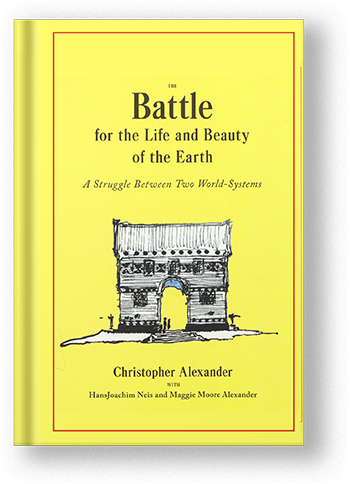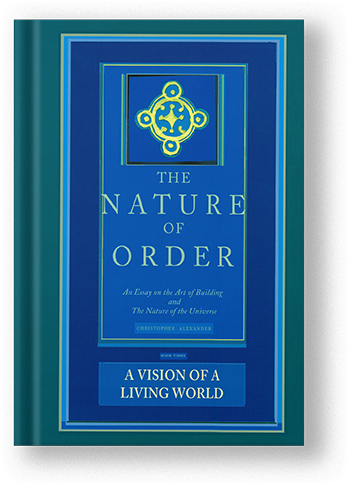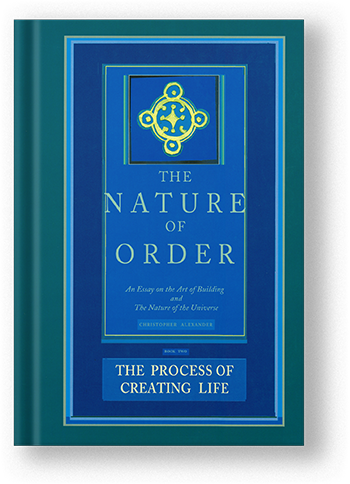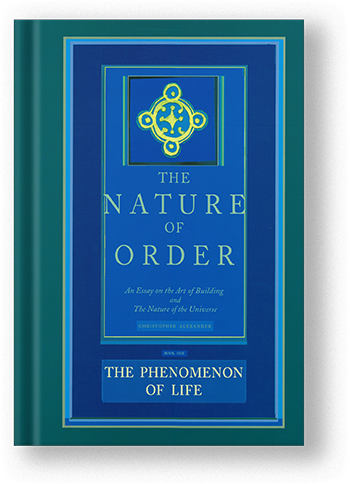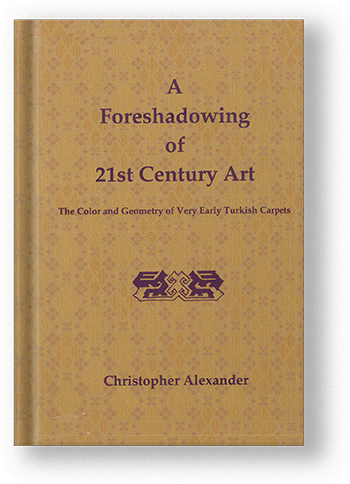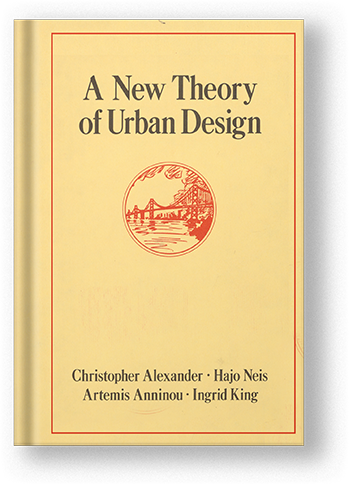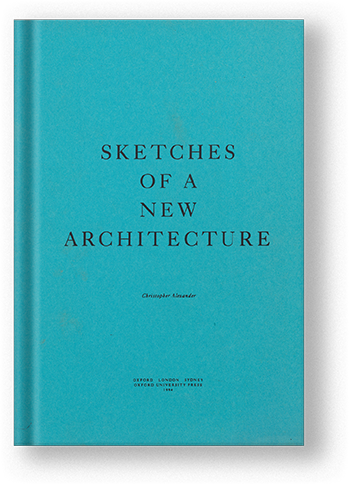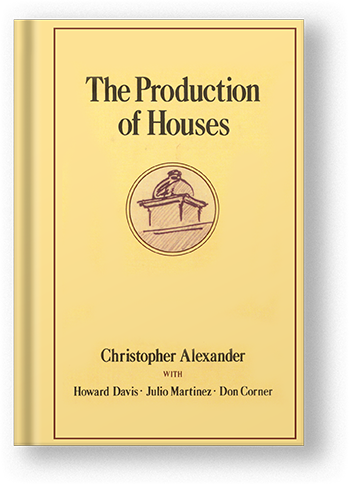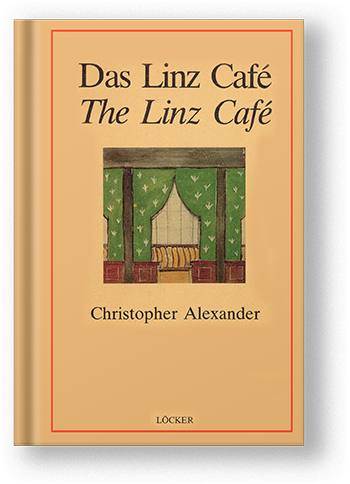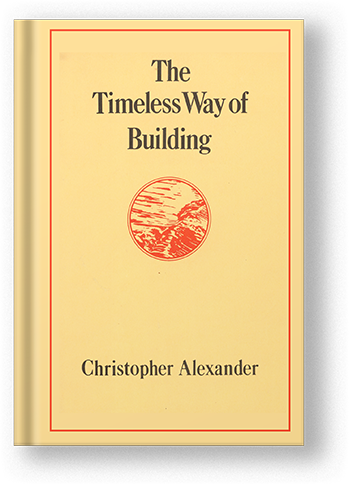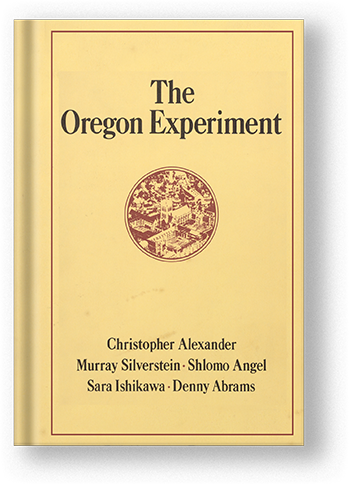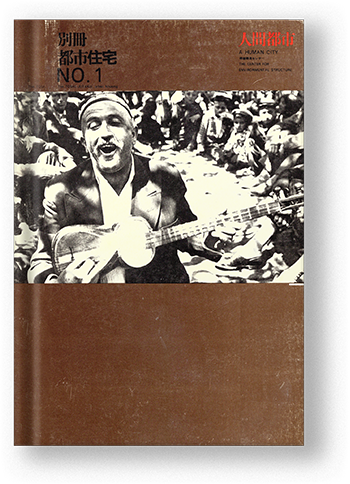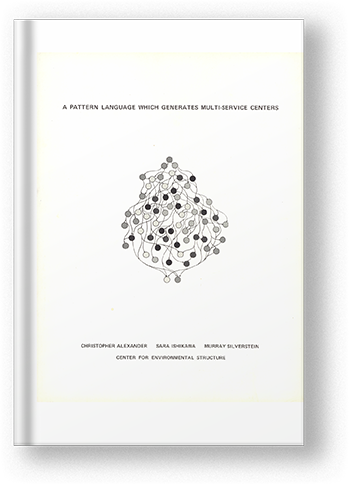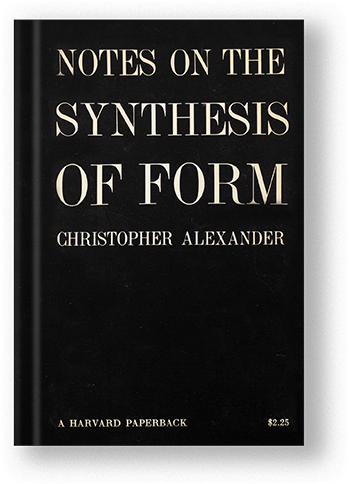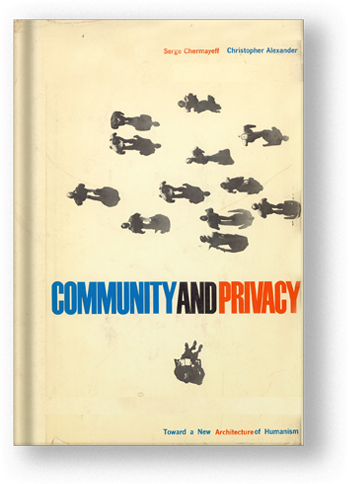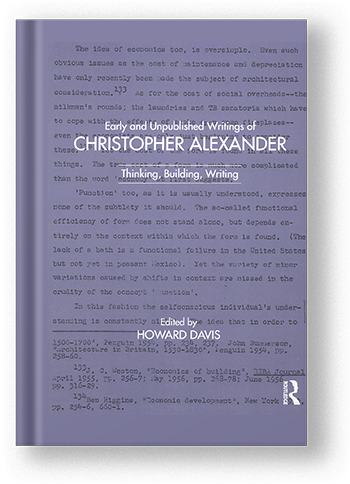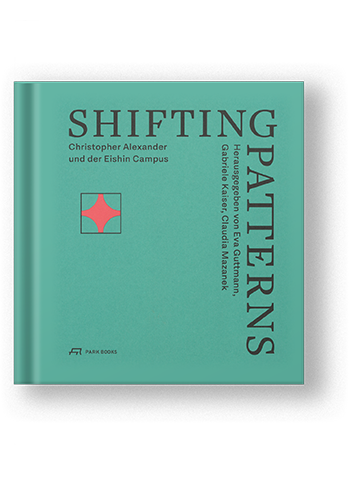The book puts forth a revolutionary vision of the human environment, which is conceived, designed and made as a necessary part of our emotional and social life. Using the construction of the Eishin Campus, Alexander demonstrates the comprehensive application of principles and methods to large-scale building projects and communities.
Hundreds of photographs and drawings provide a full spectrum of the Alexander & CES projects, their construction techniques and engineering structures. They demonstrate the kind of buildings will follow from the application of the living process, a life-creating process. Moreover, he asserts that any environment with life is a consequence of this process.
Here is a geometrical view of space and matter seamlessly connected to our personal core of experience. Alexander breaks away from the mechanistic model of building and shows us that a spiritual and personal basis must underlie every act of building. His theory on color is a highlight of the book.
Life and beauty in the built world arise only from processes which allow living structure to unfold. The secret lies in knowing, as nature does, what must happen in what order: what sequence of events allows a living form to unfold successfully. He identifies this process as structure-preserving transformations.
Alexander proposes a scientific view of the world in which all space-matter has perceptible degrees of life and sets this understanding of order as an intellectual basis for a new architecture. With this view as a foundation, we can ask precise questions about what must be done to create more life in our world.
In 1892, more than four hundred years after the warship Mary Rose sank off the English coastline, she was raised and towed to a dry dock in the historic harbor at Portsmouth. Alexander explains his vision of a permanent home for the Mary Rose, including finished models and drawings, and the way this place could be realized in structure and construction.
Alexander assembled what many believe to be one of the finest collections of early Turkish carpets in the world. Describing the carpets as his teachers, he studied their color, geometry, wholeness, their multiplicity of centers and local symmetries, positive space, levels of scale, and the emergence of beings.
In this volume, the sixth in the seminal series on architecture, Christopher Alexander and his associates present a new theory of urban design which attempts to recapture the process by which cities develop organically. To discover the kinds of laws needed to create a growing whole in a city, the authors propose a preliminary set of seven rules.
The manuscripts of “Sketches of a New Architecture” present a timeline of Christopher Alexander’s works between 1961 and 1994, highlighting his main theoretical breakthroughs in parallel with the building projects, innovations in construction and works of art. “Projects and Essays”, grouped by year, are shown sequentially.
Reprint of a 1974 project report addressed to the Master Plan Revision Committee of the City of Berkeley. It demonstrates an early approach to the idea of piecemeal development applied to the organic fabric of streets in a town, and proposes the local neighborhood as the fundamental unit for the master plan and the planning process.
Fifth in Christopher Alexander’s series on architecture, “The Production of Houses” puts Alexander’s theories to the test and shows what sort of production system can create the kind of environment Alexander has envisioned. The book centers on a group of buildings, which Alexander and his associates built in 1976 in northern Mexico.
The Linz Cafe is the fourth in the seminal series of books on architecture. The Linz Cafe describes the application of the theory to a single building commissioned by the organizers of the 1980 summer exposition “Forum Design” in Linz, Austria. From the Introduction: “The Linz Cafe is one of the first buildings in which I have succeeded in carrying out almost all the intentions expressed in the earlier volumes of this series.
This book is the introductory volume in Christopher Alexander’s series on architecture. Alexander presents a new theory of architecture, building and planning which has, at its core, that age-old process by which the people of a society have always pulled the order of their world from their own being.
You can use this book to design a house for yourself with your family; you can use it to work with your neighbors to improve your town and neighborhood; you can use it to design an office, or a workshop, or a public building. And you can use it to guide you in the actual process of construction. This is the second volume of Christopher Alexander’s series on architecture.
The third volume of Christopher Alexander’s series on architecture, “The Oregon Experiment” is the first of the series to describe in full detail how the theory presented in “A Pattern Language” and “The Timeless Way of Building” may be implemented.
Bilingual book, both in Japanese and English, prepared for the Osaka Expo ’70 exhibition in Japan, with the same title. The book includes the illustrations prepared for the exhibit, housed in the US Pavilion. The collection of illustrations expresses the main ideas which when put together form a city with an overall human feeling.
This document lays out the process of creating the pattern language for a group of houses designed for an experimental housing competition in Lima, Peru in 1969. It shows the process of creating patterns and the pattern language itself.
One of Alexander’s early works, notably the first pattern language for a project. It is presented as a system of generating principles, called a pattern language for multi-service centers. It includes 64 patterns with diagrams and a description of the way a designer might use them to design a building.
“These notes are about the process of design: the process of inventing things which display new physical order, organization, form, in response to function.” This book, opening with these words, presents an entirely new theory of the process of design. In the first part of the book, Alexander discusses the process by which a form is adapted to the context of human needs and demands that has called it into being.
In a carefully studied and detailed analysis, Chermayeff and Alexander propose a new kind of urban order, structured to provide clearly-articulated domains within which various human needs can be fulfilled without interference or conflict with other activities.
This book brings together key works of the noted architect and architectural theorist Christopher Alexander, many of which had not been published before. The book contains twenty-five essays and other works, many chosen from the newly organized Christopher Alexander and Center for Environmental Structure Archive.
This book examines Alexander’s theory of ‘systems generating systems’ and its application to a building design. It brings together essays from an interdisciplinary, international cast of experts to investigate the application of this theory to the school and university complex, the largest project Alexander has realised based on The Nature of Order principles.
In 1983, Stephen Grabow wrote that Alexander had emerged as one of the most important architectural thinkers of our time. He produced a biographical and philosophical study that examined Alexander’s ideas from early studies in mathematics and architecture, which includes long transcriptions of conversations with Alexander.




